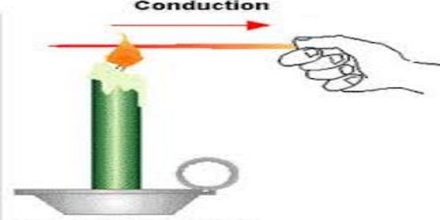

However, electrons are tightly bound within atoms in case of insulators thereby restricting any movement of electrons within the nominal range of applied voltage.
#CONDUCTOR DEFINITION PHYSICS FREE#
Conductors are substances whose atoms do not have tightly bound electrons thus they are free to roam around in one or many directions.Conductors can easily pass electricity through them because of the free electrons present in their atomic structure, but insulators, on the other hand, cannot pass electricity through them.However, insulators cannot transfer electrical energy so easily so they resist electricity. Conductors can easily transfer energy in the form of electricity or heat, for that matter.Insulators, on the other hand, oppose electric current because they won’t permit free flow of electrons from one particle to another. Conductors anticipate free flow of electric current because electrons roam freely from one atom to another with ease.Difference between Conductors and Insulators Take any cord for that matter and you can see the insulator and in case you see the conductor, it’s time to replace it. Therefore, electric wires are coated with rubber which acts as an insulator which in turn protects us from the conductor inside. This can cause electric shock because human body is also a good conductor of electricity. Sometimes the voltage is high enough to cause electric current to flow through materials that are not even considered as good conductors of electricity.


The flow of current in electronic circuits is not static and voltage can be quite high at times, which makes it a little vulnerable. Some common examples of insulators are glass, plastic, ceramics, paper, rubber, etc. The materials have such low conductivity that the flow of current is almost negligible, thus they are commonly used to protect us from dangerous effects of electricity. In simple terms, substances that prevent the flow of current are insulators. Because of the tightly bound electrons, they are not able to roam around freely. Insulators contain atoms that hold on to their electrons tightly which restrict the flow of electrons from one atom to another. These substances impede the free flow of electrons, thereby inhibiting the flow of electrical current. Insulators, on the other hand, are substances that have exactly the opposite effect on the flow of electrons. Even water mixed with impurities such as salt can be considered as a conductor. However, it is used for specialized and sensitive equipment such as satellites. Silver is a better conductor than copper but is not practical to use in most cases because of its higher cost.
#CONDUCTOR DEFINITION PHYSICS PLUS#
Other conductors include semiconductors, electrolytes, plasmas, plus non-metallic conductors such as conductive polymers and graphite. Metals are the most common conductors of electricity. It’s nothing but flow of electrons between atoms. When you switch on the light, the electrical charge passes through the wire which causes the bulb to emit light. It is very lightweight so mostly used in power distribution cables. Aluminum, on the other hand, is also a fair conductor but it’s not as good as copper. For example, copper is a good conductor because it anticipates the free flow of electrons quite easily. Most metals such as copper, aluminum, iron, gold, and silver are good conductors of electricity as the electrons are free to move from one atom to another. These substances can easily pass electricity through them as their atomic structure allows the free electrons to move freely from one particle to another with ease. This triggers sort of a chain reaction creating electrical charge through the material. If you send an electrically charged electron into a conductor, it hits a free electron, eventually knocking it off until it knocks off other free electrons. In simple terms, conductors permit electrons to roam freely from particle to particle in one or more directions. What are Conductors?Ĭonductors are substances that allow free electrons to flow through them easily, thereby transferring energy in the form of electricity as electrons move freely from atom to atom.

Let’s study the difference between the two in detail. The electrons bind together tightly within atoms, thereby restricting free flow of electrical charge. On the contrary, an insulator resists electricity, which means it has exactly the opposite effect on the flow of electrons. A conductor is a substance which anticipates free flow of electrical charge. These electrons pass electrical energy from one particle to another thereby transferring energy in the form of electricity. They are called free electrons because they can roam freely from atom to atom. Some atoms are incapable of holding their outer electrons together. The atomic structure varies from atom to atom.


 0 kommentar(er)
0 kommentar(er)
